Detailed introduction of Politehnica University of Bucharest:
Introduction and Overview
Politehnica University of Bucharest is the largest and oldest technical university in Romania and one of the most prestigious universities in Romania. It has an excellent reputation and a deep academic tradition in the field of engineering and technology. It offers undergraduate, master's and doctoral programs covering a wide range of engineering and scientific fields.
History and Founding Time
The school's tradition dates back to 1818, when Gheorghe Lazăr founded the first higher technical school in Wallachia.
On June 10, 1920, the school was transformed into the Bucharest Polytechnic School.
From 1948 to 1992, the school was called the Bucharest Polytechnic Institute.
After 1992, it was officially renamed the Bucharest Polytechnic University.
School Strength
Faculty: With about 1,400 academic staff and 1,300 administrative staff, it can provide professional teaching and guidance to students.
Disciplines and majors: There are 15 schools and departments with a wide range of majors, covering aerospace engineering, applied electronics, applied informatics, ecosystem engineering, chemical engineering, power system engineering, electrical systems, energetics and nuclear technology, engineering materials processing, food chemistry, industrial design, industrial economic engineering, industrial informatics, industrial logistics, information engineering, information technology and other fields.
Research achievements: As a research university, it has achieved remarkable results in scientific research, especially in the field of engineering technology. Some of its research results have a certain influence internationally, and it actively participates in international scientific research cooperation projects.
Nature of the institution
A public university funded and managed by the Romanian government.
Educational philosophy
Integrating education, research and innovation, it is committed to creating knowledge through scientific research, disseminating knowledge through education and professional training, and promoting knowledge through information technology and technological innovation, and cultivating professionals who meet the needs of knowledge-based society and economic development.
Key laboratories and disciplines
Key laboratories: The school has a number of advanced scientific research laboratories and research centers, such as special research laboratories in the fields of energy, materials science, electronics and telecommunications, which provide good conditions for the scientific research activities of teachers and students.
Advantageous disciplines: It has strong strength and high reputation in the fields of electrical and electronic engineering, mechanical engineering, computer science and technology, energy engineering, etc., and is in the 351-400 range in the QS World University Subject Rankings.
Faculty
Including 15 colleges, including the School of Electrical Engineering, the School of Power Engineering, the School of Automatic Control and Computer Science, the School of Electronics, Telecommunications and Information Technology, the School of Mechanical Engineering and Mechatronics, the School of Industrial Engineering and Robotics, the School of Biotechnology Systems Engineering, the School of Transportation, the School of Aerospace Engineering, the School of Materials Science and Engineering, the School of Applied Chemistry and Materials Science, the School of Foreign Languages Engineering, the School of Applied Sciences, the School of Medical Engineering, and the School of Entrepreneurship, Business Engineering and Management.
Ranking
In the QS World University Rankings, it is in the 1201-1400 range, and ranked 81st in the QS Emerging Europe and Central Asia region.
Ranked among the top engineering universities in Romania.
Cost
Tuition fees: The annual tuition fee for undergraduates is about 3,000-6,000 euros, and the tuition fees for masters and doctoral students are relatively higher.
Living expenses: The living expenses in Bucharest are relatively moderate, and the monthly living expenses are about 500-800 euros, including accommodation, food, transportation and other expenses.
Campus environment
Campus facilities: The main campus is located in Bucharest, with modern teaching buildings, libraries, laboratories, computer centers and other teaching facilities, as well as student dormitories, canteens, gymnasiums and other living facilities.
Academic atmosphere: The strong academic atmosphere, often holding various academic lectures, seminars, academic conferences and other activities, provides a broad academic exchange platform for teachers and students.
Cultural activities: The school pays attention to the comprehensive quality training of students, and organizes a variety of campus cultural activities, such as cultural festivals, sports competitions, art exhibitions, etc., which enrich students' extracurricular life.
-

Grigore T. Popa University of Medicine and Pharmacy
-
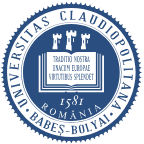
Babes-Bolyai University
-
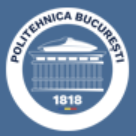
Politehnica University of Bucharest
-
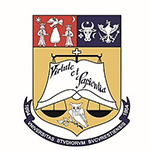
University of Bucharest
-
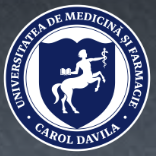
Carol Davila University of Medicine and Pharmacy
-
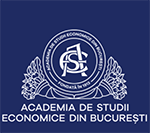
Bucharest Academy of Economic Studies
-

Technical University of Cluj-Napoca
-

1st December 1918 University of Alba Iulia
-

West University of Timisoara
-

University of Medicine and Pharmacy of Craiova
-

Mesoamerican University
-

Istmo University
-

Mariano Galvez University of Guatemala
-

Regional University of Guatemala
-

Galileo University
-

Francisco Marroquín University
-

Rafael Landívar University
-

University of the Valley of Guatemala
-

University of San Carlos of Guatemala
-

Technological Institute of Tlaxcala Plateau
-

Golfo University
-

Technological University of South Sonora
-

Technological University of Huejotzingo
-

Tizimín Institute of Technology
-

Chilpancingo Institute of Technology
